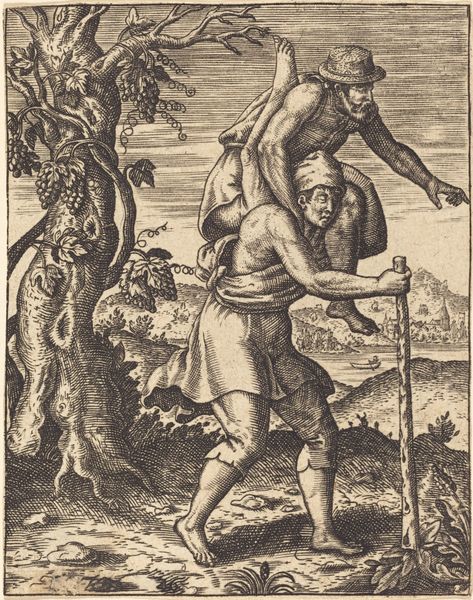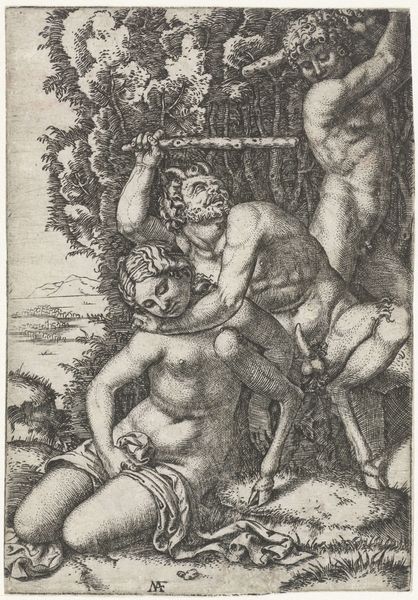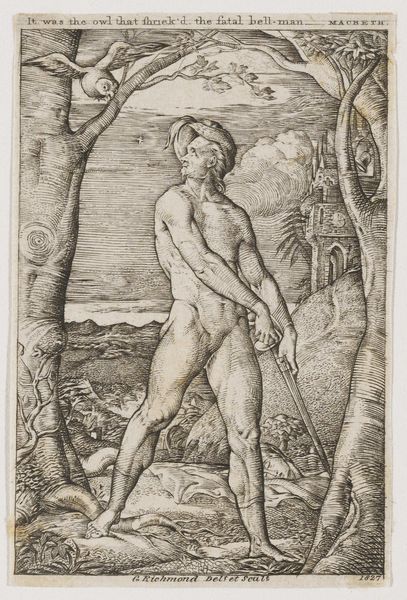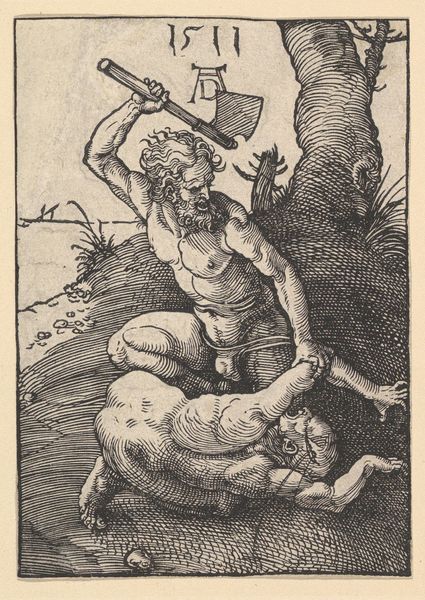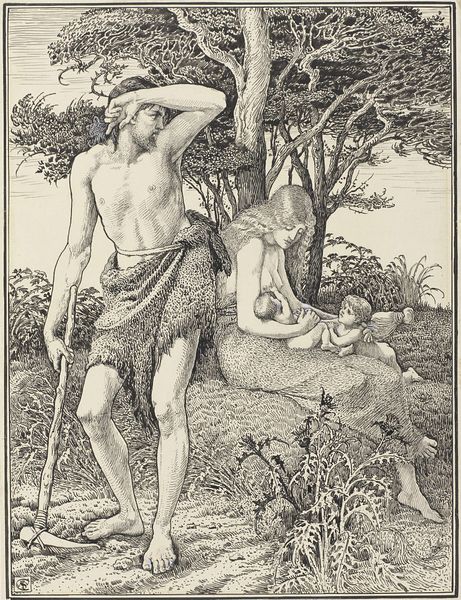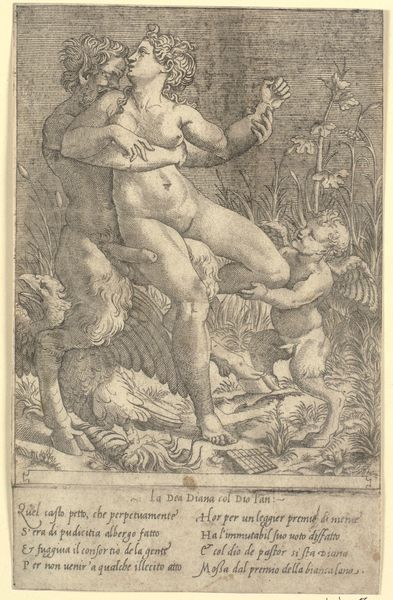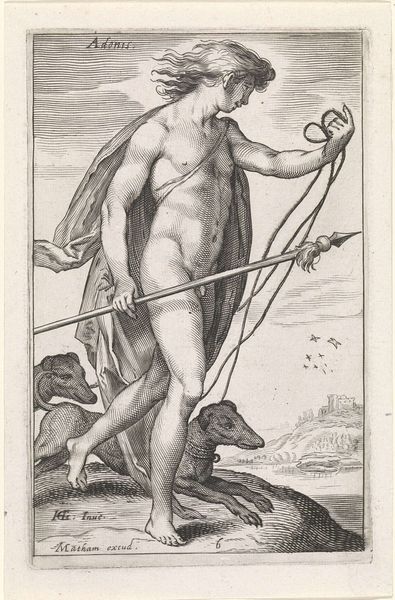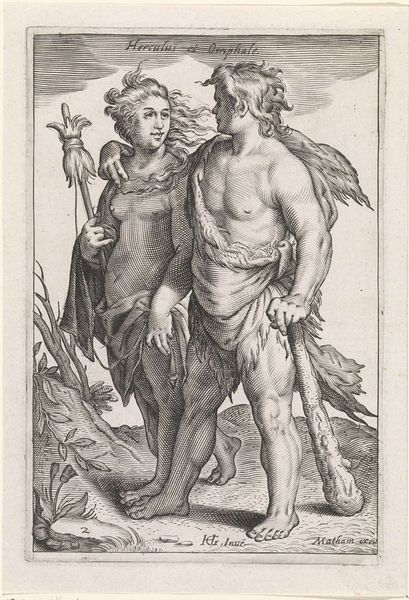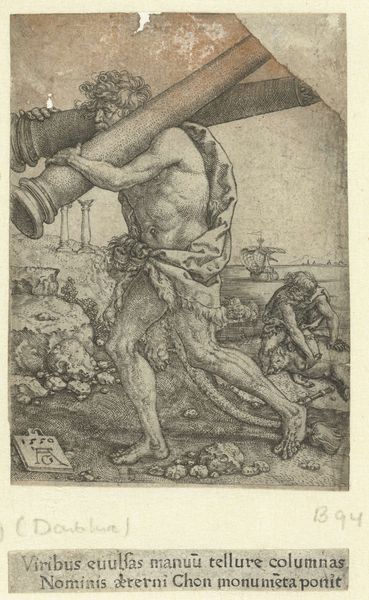
print, engraving
# print
#
figuration
#
11_renaissance
#
history-painting
#
northern-renaissance
#
engraving
Dimensions: height 68 mm, width 47 mm
Copyright: Rijks Museum: Open Domain
Jacob Binck created this engraving, Christus op de koude steen, or Christ on the cold stone, in the 16th century. The image presents a seated, suffering Christ, after his trial but before his crucifixion. Binck was a court painter for Christian III of Denmark. He specialized in painting portraits for members of the court and was known for his prints. The composition uses visual codes recognizable to its original audience, such as the crown of thorns. The inscription “Ecce Homo,” meaning “behold the man,” is a direct quotation from the Latin Vulgate Bible, when Jesus is presented before Pontius Pilate’s court. Christ is separated from the viewer through his physical and emotional isolation. Seated on a stone block, his nakedness alludes to vulnerability and his physical suffering. The light radiates from behind him. To understand Binck's image more fully, a social historian can consider the religious environment in which it was created and examine the artist's biography through institutional records. By examining the context, we can better understand the artwork’s meaning.
Comments
No comments
Be the first to comment and join the conversation on the ultimate creative platform.

